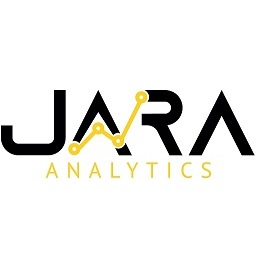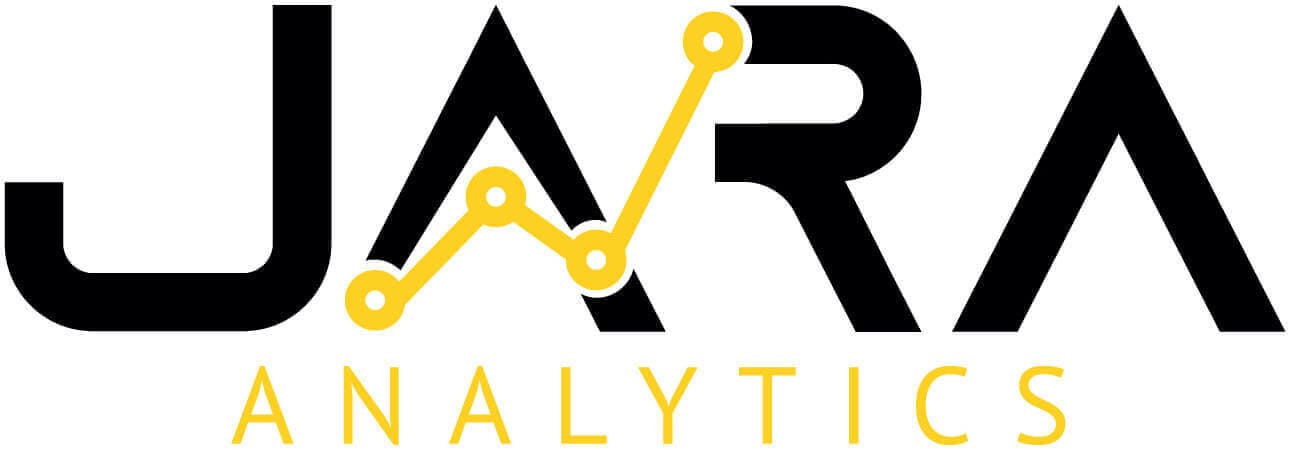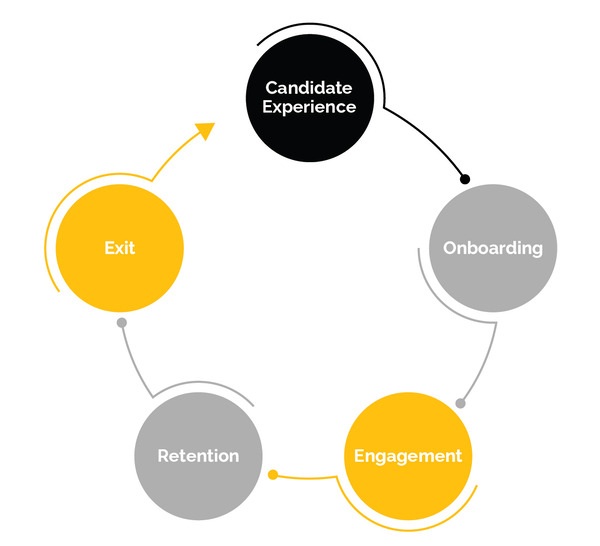What is HR Analytics?
In the simplest sense of the term, HR Analytics—also known as people analytics or workforce analytics—is the process of using data to understand a workforce and improve how a business manages its employees. Examples of HR data analytics are ubiquitous, and they can help you enhance the quality of talent being hired, optimize post-hire training, boost overall organizational satisfaction, and reduce turnover. Use this Jara Analytics guide to understand why HR analytics is important for businesses today.
Traditional HR Methods vs. HR Analytics
| Traditional HR Methods | HR Analytics |
|---|---|
| Intuition-based decisions | Data-driven decisions |
| Operational focus (day-to-day) | Strategic focus (long-term planning) |
| Subjective methods | Objective methods |
| Small-scale view & analysis | Big-picture view of the workforce |
An Interdisciplinary Field
HR analytics is what you get when you apply an interdisciplinary approach to traditional HR methods. This analytical field combines aspects of HR, data science, and business intelligence.
- Data Science: By leveraging advanced analytics techniques, HR analytics can help organizations identify trends and correlations in HR data. For example, HR data analytics can be applied to improve employee performance, recruitment, retention, and workforce demographics.
- Business Intelligence: HR analytics incorporates elements of business intelligence, allowing organizations to gain a more comprehensive understanding of their workforce and how it impacts their business performance. BI tools allow organizations to visualize data from various sources to identify patterns and opportunities.
The Importance of HR Analytics
As the workplace evolves with advanced technologies, challenges like shrinking margins and advancing competencies require companies to manage their people proactively. By understanding what HR analytics is, and factors like employee engagement, job performance insights, internal communications strategies, and external talent market trends, people analytics provides organizational leaders visibility into potential success or exposure areas that could otherwise remain hidden.
Better Decision-Making Processes
Interpreting and analyzing HR data is what allows scaling businesses to make better decisions. Metrics like employee performance and recruitment stats can help identify areas for improvement and assist in making informed decisions to optimize the workforce.
For example, recruitment can be improved by analyzing data on time to fill and hiring sources, allowing businesses to zero in on the most effective hiring methods. Similarly, analyzing employee performance data can help you pinpoint top performers and identify additional training and improvement opportunities.
Identify Patterns Related to Workforce Management
Even small startups with modest workforces produce massive amounts of data, daily. HR data analytics is an example of a modern solution to a timeless problem, giving organizations the power to process all that data to intelligently identify workforce patterns.
HR analytics is what helps identify which departments or teams have the highest turnover rates, which skills are in high demand, and which employees are most likely to leave the organization. Managers can then use this information to optimize recruitment strategies, improve employee engagement, and develop targeted training programs to retain top talent better.
Benefits Employers and Employees
Businesses that understand why HR analytics is so important know that it can benefit employers and employees equally if implemented well.
- Employers: Managers and business owners can significantly reduce needless spending and boost their ROI with cost-effective workforce management strategies. By taking guessing out of the equation, HR analytics is what allows businesses to pivot confidently and try new approaches.
- Employees: Optimized training can benefit everyone in your organization, from trainees to executive-level staff. By improving employees’ skills and on-the-job performance, HR analytics can raise employee satisfaction levels and even provide new opportunities for career growth.
Key Components of HR Analytics
- Data Collection: HR analytics relies on multiple data sources (i.e. HRIS, ATS) to provide insights into various HR areas. These sources include employee surveys, performance reviews, attendance records, and recruitment metrics. HR analytics also collects data from external sources such as job market trends, salary surveys, and industry benchmarks.
- Data Analysis: Those who know what HR analytics is understand the importance of data analysis. Various tools are used in HR data analytics, and examples include statistical analysis, data visualization, predictive modeling, and machine learning.
- Insight Generation: How data is transformed into actionable insights. Once the data is collected and analyzed, HR analytics generates actionable insights to help organizations make data-driven decisions. These insights can be in the form of dashboards, reports, or visualizations that are easy to understand and share with stakeholders.
Applications of HR Analytics
- Workforce Planning: HR analytics is what helps organizations plan for future workforce needs by analyzing workforce trends, skill gaps, and succession planning. This form of analytics can be particularly useful in a time of global economic uncertainty, as it can help businesses be precise with their hiring and circumvent needless spending.
- Recruitment Optimization: HR analytics can improve recruitment processes by identifying the most effective channels for sourcing candidates and evaluating the success of recruitment campaigns. Organizations can refine their recruitment process on a granular level, from descriptive metrics like recruitment expenses and selection ratios to predictive analytics like demand forecasting.
- Employee Retention: By identifying patterns and trends, companies can reduce turnover rates and improve employee retention efforts. Additionally, compensation analysis is an important part of HR analytics that reduces and eventually eliminates gaps in pay equity. Organizations can significantly enhance employee retention and even reduce the attrition of valuable senior employees.
- Performance Evaluation: You don’t need to know what HR analytics is to understand the impact that effective data analysis can have on performance evaluation. A typical example of HR data analytics, in this case, is the identification of the most relevant KPIs for your organization. By identifying these metrics, businesses can understand the factors that drive high/low performance and quickly develop programs to tackle those weaknesses.
Challenges in Implementing HR Analytics
Data Privacy, Ethics, and Security
HR analytics requires collecting and storing sensitive information about employees, such as personal details, salaries, health records, and feedback. Protecting this data from unauthorized access, misuse, or breach is essential. Data privacy and security can be enhanced by following ethical and legal guidelines, such as obtaining consent, anonymizing data, encrypting data, and limiting access. Knowing why HR analytics is important is one thing, but organizations need to have precautions in place to make the most of it.
Integrating HR Analytics into Existing HR Practices
Once organizations fully understand what HR analytics is, they need to lay the groundwork for a smooth transition. HR analytics relies on data. If the data is incomplete, the insights generated may not be actionable. Organizations may need to invest in new data collection methods or systems to ensure data quality.
Another example of HR data analytics challenges is ensuring that insights are aligned with the organization’s goals and objectives. HR analytics can generate a large amount of data and insights, but some of it might be irrelevant for their particular goals. Organizations must develop clear goals and objectives for HR analytics to ensure that the insights generated align with their overall strategy.
Correctly Interpreting & Presenting HR Data
Even managers who fully understand what HR analytics is can struggle with the day-to-day implementation. Having a skilled team for interpreting and presenting HR data is crucial for organizations that want to make the most of their HR analytics efforts. This data can be complex and challenging to interpret, and having professionals with the necessary skills can ensure that insights are accurate, relevant, and actionable.
Producing and processing data is meaningless if you don’t have an effective way to present it. A skilled team with strong communication skills can effectively communicate those actionable insights to the organization’s stakeholders. By clearly conveying the implications of those insights, these teams can empower managers to make better decisions faster.
What is the Future of HR Analytics?
The examples of HR data analytics in action mentioned above are already fairly advanced, but it’s clear that the field will only become more sophisticated as technology evolves. Let’s look at a few of these upcoming trends in detail.
- AI: Those who understand why HR analytics is important can see how artificial intelligence might further empower the field. For example, with AI and machine learning, HR analytics tools can analyze employee data to identify which traits predict success in a given role. This information can then be used to improve the hiring process by identifying candidates who are more likely to thrive in a given position.
AI is already being used for HR analytics in some ways. For instance, Large Language Model (LLMs) can analyze massive amounts of employee survey comments and sentiment data to identify themes and patterns to generate insights around engagement and performance. Other AI Algorithms can also be used to monitor employee KPIs such as attrition rate and flag anomalies constantly. Understanding what HR analytics is and leveraging it with AI could help you streamline your business in the future.
- Wearables: Real-time employee feedback could be part of the future of HR analytics. Let’s consider an example of HR data analytics and wearables in action: With the help of wearable technology and other monitoring tools, companies can gather and analyze data on employee performance in real time. This tech can help managers identify key elements of employee well-being, like sleep patterns, stress, and physical activity, which can help to paint a clear picture of employee health and aid in the adjustment of workloads and the types of wellness benefits offered.
- Holistic Analytics: In the future, we could see even better applications of analytics to generate a more holistic view of organizations. HR analytics could be used to analyze how the performance of other departments affects HR metrics, like measuring the impact of revenue on employee engagement.
Once you understand what HR analytics is, it’s worth staying updated about the latest trends in the field and potential developments in the future. Keep an eye out for our future blog posts to stay informed about HR analytics.
Supercharge Your Business With HR Analytics
Now that it’s clear why HR analytics is important, it’s time to put it into action for your business. From optimizing your hiring process to cutting down on employee attrition, HR analytics can completely revolutionize your business and its performance.
If you’re ready to experience the benefits for yourself, contact the experts at Jara Analytics for a free consultation today and find out what we can do for your business.

Jara Analytics empowers organizations to achieve their full potential through data-driven HR solutions. We leverage advanced analytics, including generative AI-powered sentiment analysis, to deliver actionable insights that drive strategic decision-making. Our customized analytics solutions and expert consulting services help you understand your workforce, predict trends, and make informed decisions across areas like recruitment, retention, engagement, and performance. Partner with Jara Analytics to unlock the power of your HR data, optimize your people strategies, and foster a thriving, data-driven workplace.
The Jara Analytics team is always working on pushing the envelope with bold, data-driven strategies. Be the first to know about new HR developments by following our blog.




